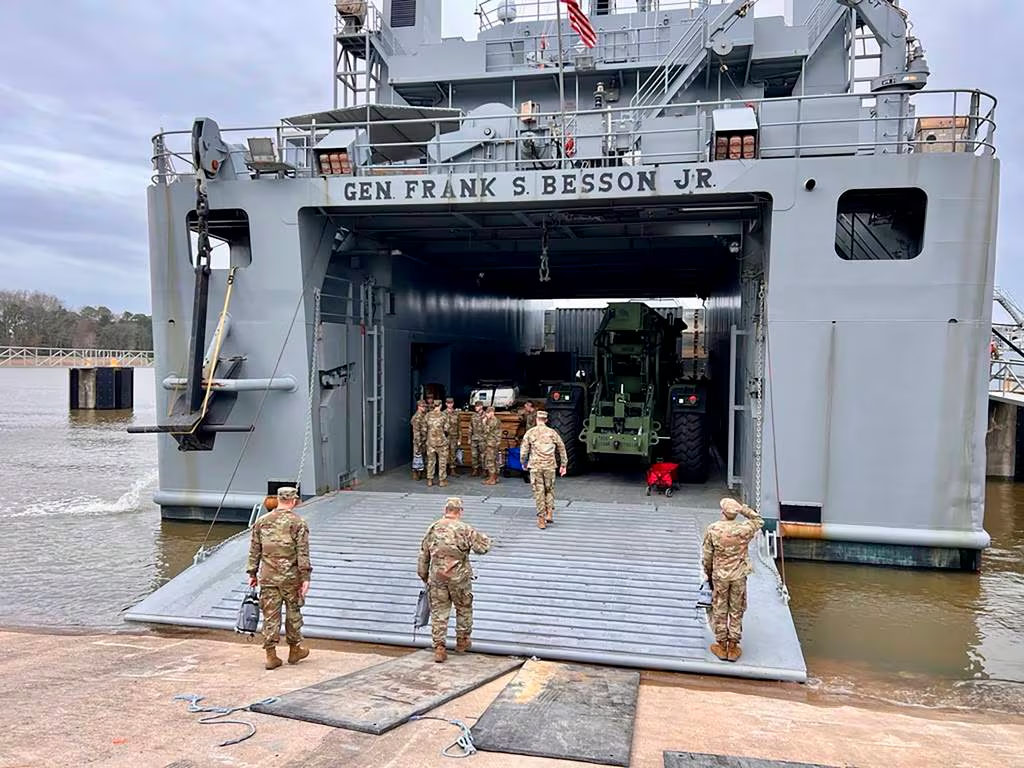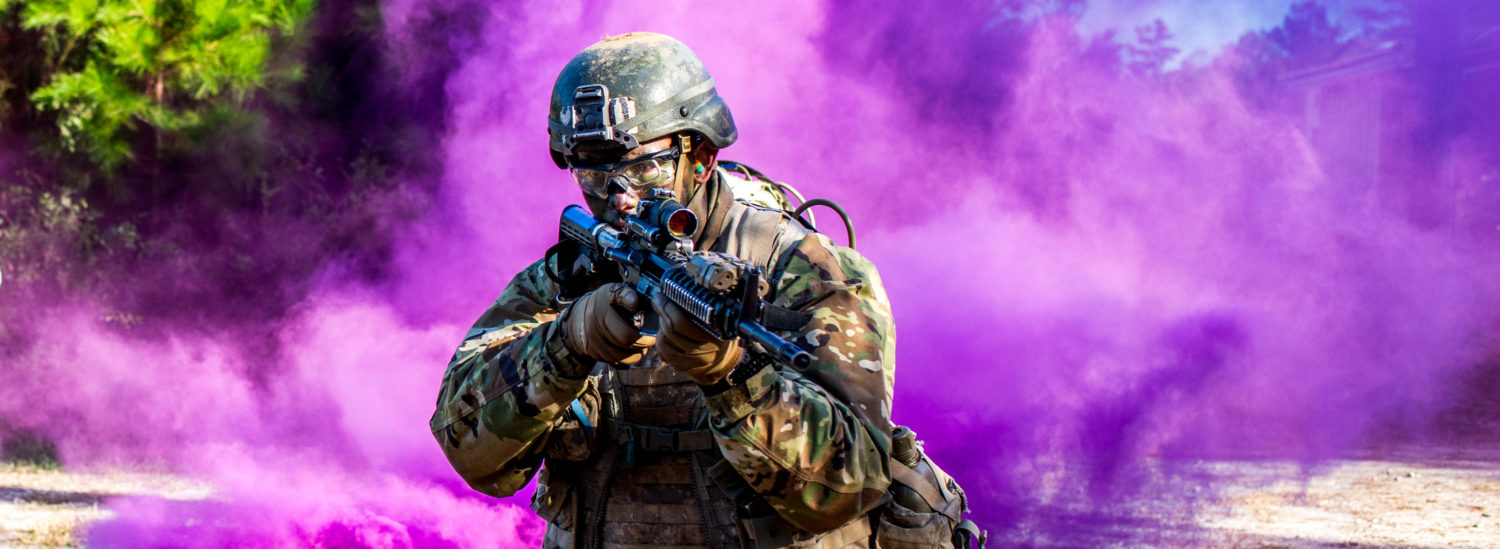In the Spring of 2024, a minor flotilla of Army vessels crossed the Atlantic. The eyes of Gaza watchers were held by the Army’s curious navy, and the utility of the flotilla was brought to full-light in the service of humanity. But one week prior to this mission, the demand for Army watercraft was near-invisible. Although employed as an instrument of peace, this deployment displayed a capability that large scale combat operations will demand. Army watercraft are invisible until they’re needed – and it’s often been that way.

The naval underpinnings of an operation 75 miles from the nearest coast is not readily apparent. “A bridge too far,” the iconic phrase of Operation Market Garden, evokes the image of an armada of planes, not of ships. The airborne army that spilled from the sky to invade the Dutch countryside in September 1944 could have been brought to heel by a math problem — and nothing has changed today. The naval aspect of Operation Market Garden is invisible because it was taken for granted. The Army does not have that luxury today, which is why pulling this decadent aspect of the operation into to full light is prescient.
The 82nd Airborne Division was reliant on a flotilla of Landing Ships, Tank for moving vital equipment. The dependence exploded in the year prior to Operation Market Garden, coinciding with an explosion in trucks needed to move the division in battle. The need was displayed in Sicily, a time when the division was built on daring and economy. Everything was airmobile, with few exceptions. The robustness of the tool was limited by the fragility of the glider. Major General Matthew Ridgway, commander of the 82nd Airborne Division, was already pensive about the deficit this would leave them in. Operations in Sicily confirmed his inner feeling. In a memo, his supply officer wrote, “The Quartermaster Company should be enlarged, similar to that of a triangular division which includes much needed 2 1/2-ton trucks. The air landing by glider or plane of thirty (30) 1/4-ton trucks and trailers would leave this division without adequate means to supply itself for sustained action.”
To solve this, they looked to the sea. They became reliant on the LST.

Logistics support vessel Gen. Frank S. Besson prepares to depart Joint Base Langley-Eustis, Va., on Saturday, en route to the Eastern Mediterranean. (U.S. Central Command via AP)
Today it is the tanks the Army desires to deter China on the land which reminds the Army of the importance of watercraft. They soon realized the problem they were having in the “last tactical mile” — in getting them ashore. The Army recently became enlightened to the flexibility and options small- to medium-sized landing ships granted, such as the General Frank Besson-class logistics support vessel (LSV). (The USAV General Frank Besson, Jr. is currently en route to Gaza — and belongs to the XVIII Airborne Corps.) This celerity, granted by landing ships, underpins the design of the new US Marine Corps. And, taking note, in a recent exercise, Army watercraft broke from its traditional logistics role into the realm of maneuver by shifting rocket launchers around islands to bewilder enemy targeting. As this dispersion increases in an observation-saturated environment, so will demand for Army watercraft. Yet this releases no obligation from supporting conventional battle. As General Charles Flynn is always keen to point out, the US Army Pacific he commands will have a land fight on its hands in the event of war. “There is a natural tendency to look at the map and think you can solve this with air and maritime power alone,” General Flynn said in an interview. Even with land operations, those small- and medium-sized ships will have invisible demand, just like in Operation Market Garden. They were nearly neutered without it.
September 20, 1944 stands as a day in which the necessity of a seaborne echelon stood in stark relief. It was a severe test of the airhead. An eager battle unwound, sweeping the entire division’s frontage. Two regiments, plus the division reserve, were beating off two vectors of German attack while a third regiment attacked in another direction. After the daily resupply was dropped by plane, a sprawling field was littered with needed commodities of war, yet they may as well been marble monuments. They stood mute, immutable.
The large trucks, those multi-ton trucks of the seaborne echelon, needed to collect and distribute these supplies had yet to arrive. Without them, the 82nd Airborne had means of little scale. A few hours before midnight, ammunition in extreme want, an appeal for the British to send trucks was made.

Image originally featured HERE.
The team of trucks needed to replenish the prodigious amount ammunition consumed in a division fight was mounted on a flotilla of 13-15 Landing Ships, Tank (LSTs). In the year between September 1943 and September 1944, the number of two-and-a-half ton trucks tripled. The number of 3/4-ton trucks leapt from 7 to 119. Then there were the trailers, the ambulances, the spare jeeps, not to mention a gargantuan ordnance truck. But what is most revealing is the clause in the division order — “The seaborne elements for Operation MARKET will…be held to this maximum” — which enforced each regiment to 20 two-and-a-half tons for the full spectrum of supply and transportation.
It was an ambitious undertaking. And all to move the lightest division in the American arsenal, to an operation 75 miles from the nearest coast. These LSTs were taken for granted in Operation Market Garden. They are invisible to history because they were assumed in the planning due to a proliferation of ships — but not so for the conflict of the future. The illustration holds capacity in stark relief to plans; LSVs — the modern LST — cannot be assumed by the brigade transiting to battle. If the Army is serious about transitioning to division-centric operations, it is incumbent upon it to ensure the ability to deploy divisions as divisions. Math is unimpressed by a public affairs officers’s glistening statements of transiting a battalion. In Sicily, the inability to deploy the 82nd Airborne Division as it was designed — a cohesive, division unit of action — led to problems. A healthy Army marine fleet, and robust amphibious Navy, can still be vital when the demand is yet invisible, as it was for the 82nd Airborne in 1942.
Pound on the table. Invest in it.
Tyler Fox is an independent historian. He writes the Substack publication, Ridgway’s Notebook, and is the 33rd Honorary Member of the 504th Parachute Infantry, where he regularly works on historical projects. His book Battle Surgeons: Care Under Fire in the 504th Parachute Infantry will be released in December 2023.
Find Tyler’s new book, Battle Surgeons: Care Under Fire in the 504th Parachute Infantry HERE
Complete archive of The Company Leader Posts


Please note: I reserve the right to delete comments that are offensive or off-topic.